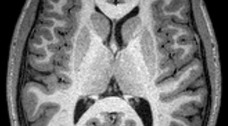Douglas researchers characterize brain region linked with discontent
2007-07-31

Having trouble enjoying the diversions of summer? It may be you suffer from a condition called anhedonia – the inability to enjoy pleasurable experiences. According to researchers at the Douglas Mental Health University Institute, one area of the subcortical regions of the brain is to blame. Their findings, published recently in Molecular Psychiatry, may also provide new insights for early detection of psychiatric diseases such as major depression and schizophrenia.
“It has been well established that anhedonia is a key symptom of major depression and schizophrenia,” says Douglas researcher and senior author, Martin Lepage, PhD. “We chose to study this core symptom in hopes of finding a vulnerability marker to better diagnose these mental illnesses. Our study was a success: pointing to reduced subcortical brain volume as a measurable marker for the potential development of depression or schizophrenia.”
“This is the first study to identify volumetric abnormalities specifically linked to anhedonia,” says Philippe-Olivier Harvey, a doctoral student and lead author of the study. “Those individuals who had a high anhedonia score had a significantly smaller anterior caudate volume. We know from previous work that the anterior caudate is one of the subcortical regions linked to reward behaviours and pleasurable experiences. Thus, our findings make sense: smaller subcortical regions resulted in reduced abilities to experience pleasure.”
“In addition, we identified other regions in which increased brain activity was associated with increased anhedonia,” adds Harvey. “This finding is similar to previous studies which have shown an activity/depression link, confirming the validity of our experimental paradigm. We believe these brain volume and activity measurements are reliable biological markers for anhedonia and for the early diagnosis of other mental illnesses. ”
Martin Lepage, an assistant professor at McGill’s Department of Psychiatry and Philippe-Olivier Harvey MPs, along with Douglas colleagues, Jens Pruessner PhD, and Yvonne Czechowska, studied the profiles of 29 individuals who had no previously diagnosed psychiatric illnesses. Questionnaires were used to quantify any anhedonia. Information regarding brain structure and function was obtained from functional magnetic resonance imaging (FMRI), which was performed at the Montreal Neurological Hospital/Institute. Comparisons between the degree of anhedonia, brain volume and activity were then made.
This study was supported by funding from the Natural Sciences and Engineering Council of Canada, the Canadian Institutes of Health Research and the Fond de la Recherche en Santé du Québec.
-30-


